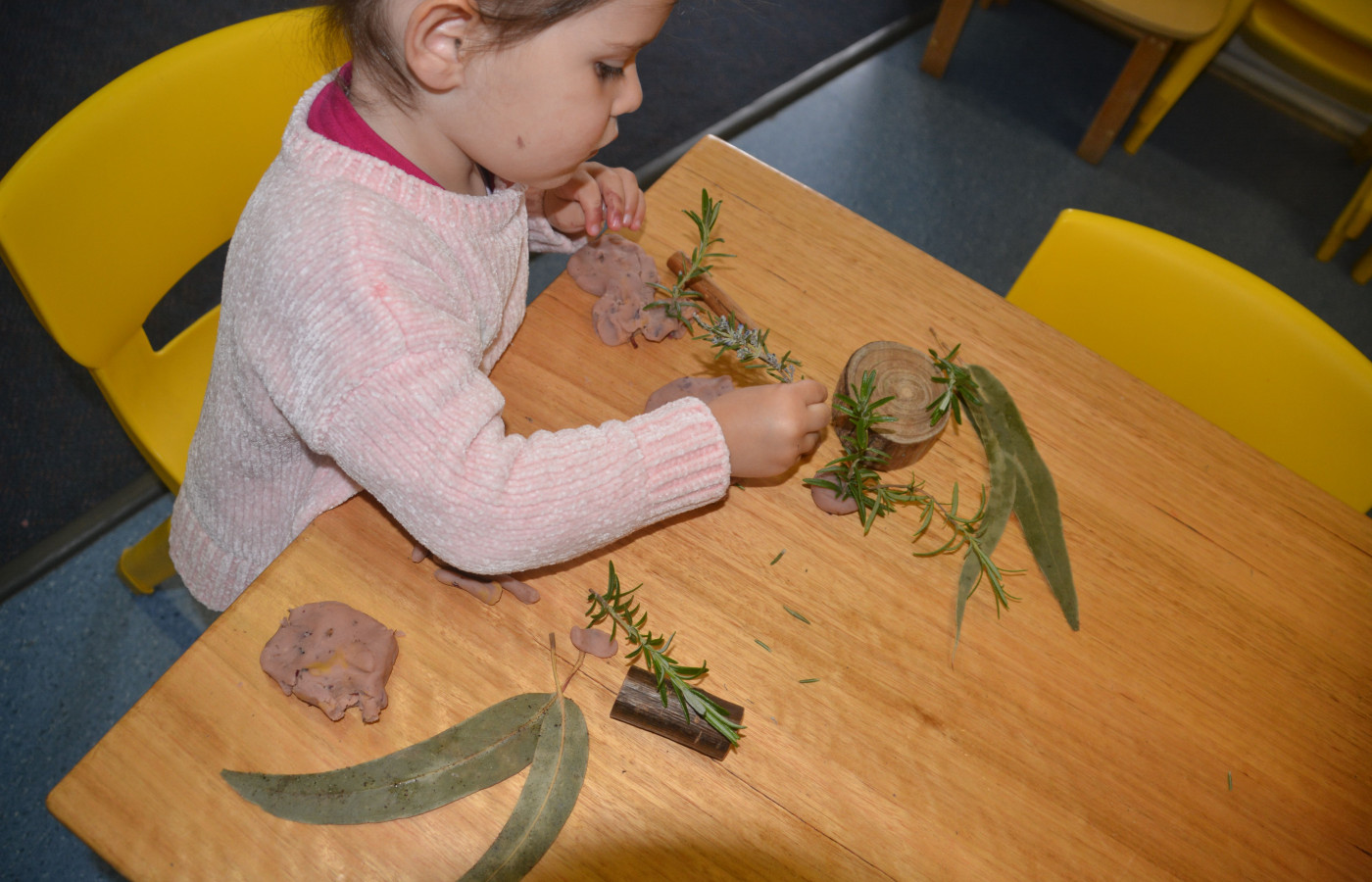Making faces with natural materials

Making faces with natural materials
Using natural items to create faces
Materials Required
- The following are suggestions- use whatever you can find in your garden or neighbourhood
- Leaves
- Tree bark
- Small sticks
- Pine cones or seed pods
- Small rocks or pebbles
- Flowers
If you want to build on this activity you could paint the small rocks with eyes and mouths, Paint (acrylic is best for rocks), Paintbrushes (fine)
Play experience profile
-
Ages:
-
Min Playtime15 - 30 Minutes
-
Skills
-
Energy LevelActive play
-
Messiness Rating
-
EYLF Outcomes
Play Experience Preparation
Collect natural materials and rocksExperience Steps
- Go for a walk, take a small basket or bag and collect some natural materials you could use as hair, noses, mouths, eyes.
- Try and find leaves, small branches, seeds, seed pods, small rocks and pebbles, bark, flowers (these work well).
- Once you are home again, find a flat surface to work on (a table, concrete area).
- Your child can get creative here. Lay out the collected materials so it is easy to see them all.
- Let your child choose the materials they would like to use to make their face.
- Prompt them with questions about facial features.
- Encourage their creativity and maybe you can make one too.

What to talk about, or questions to ask during the experience
- How many eyes do we have?
- Where is our nose?
- Are our eyes at the top of our face?
- Where is our mouth?
- Where is our hair?
- What do you think we could use these leaves for?
- Do you think these flowers would be good for eyes or a nose?
Build on this...
- You could extend this activity by painting on some rocks with eyes and mouths.
- Try painting different coloured eyes.
- Try painting different mouths- with teeth, surprised, sad, happy etc.
- Once dry you can use these rocks again for other experiences.
- Discussion and create different facial expressions.
WHO guidelines for physical activity and sedentary behaviour
Provide evidence-based public health recommendations for children, adolescents and adults on physical activity.
Learn more
Provide evidence-based public health recommendations for children, adolescents and adults on physical activity. Learn more
Walking around your garden or neighbourhood is being physically active.
EYLF Outcomes
The Early Years Learning Framework has been designed for use by early childhood educators working in partnership with families, children’s first and most influential educators.
View PDF
The Early Years Learning Framework has been designed for use by early childhood educators working in partnership with families, children’s first and most influential educators. View PDF
- Children develop knowledgeable and confident self identities
- Children become strong in their social and emotional wellbeing
- Children interact verbally and non-verbally with others for a range of purposes
EYLF Principle
Principle 1: Secure, respectful and reciprocal relationships. Through a widening network of secure relationships, children develop confidence and feel respected and valued.
EYLF Practice
Practice: Responsiveness to children. Responsive learning relationships are strengthened as educators and children learn together and share decisions, respect and trust. Responsiveness enables educators to respectfully enter children’s play and ongoing projects, stimulate their thinking and enrich their learning.
Author:


